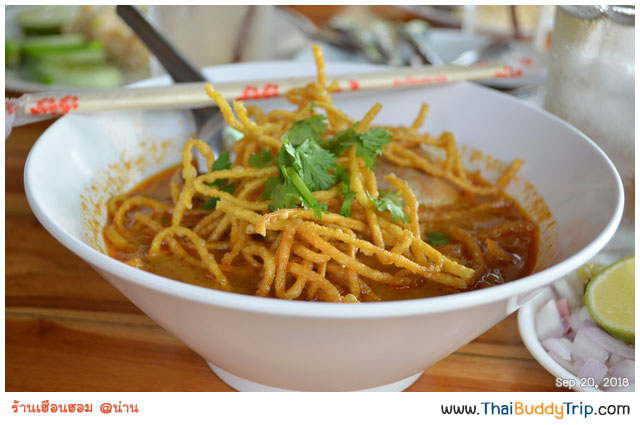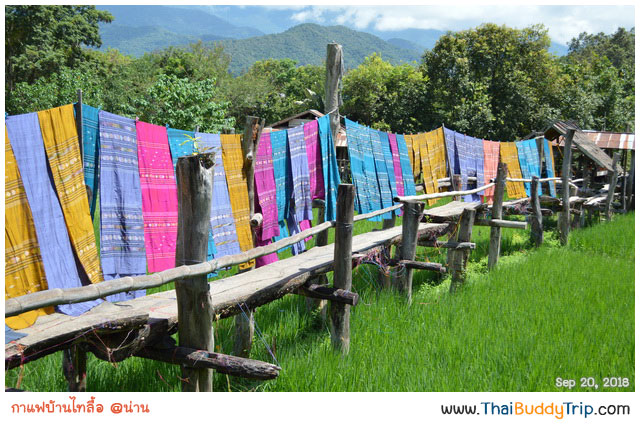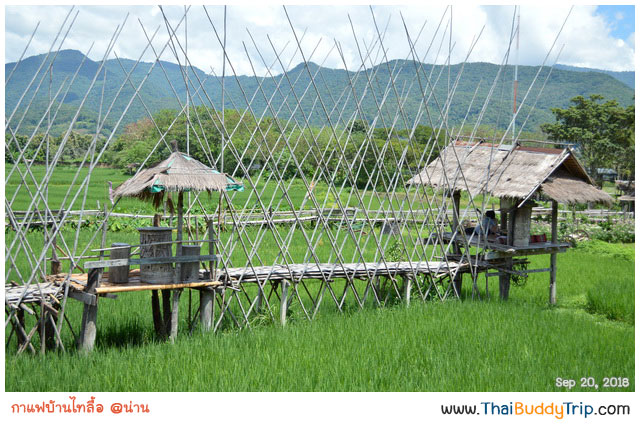ทริปน่าน นะจ๊ะ วันที่ 1
ทริปทัวร์จังหวัดน่านนี้เกิดจากความห่างหายทริปยาวๆ มาครบปีพอดี หลังจากปีที่แล้วไป เกาะช้าง จ.ตราด กันมา และทริปนี้เป็นครั้งแรกที่จะได้เดินทางผ่านถนนทางนี้ ทริปก่อนๆ ไปเที่ยวเชียงใหม่ เชียงราย จะไปทางกำแพงเพชร-ตาก ถนนหมายเลข 1 เป็นหลัก ทำให้การเดินทางครั้งนี้ต้องดูแผนที่กันเรื่อยๆ ตลอดทาง :)
เราเริ่มออกเดินทางจากระยอง 1 ทุ่มตรง เดินทางไปรับเพื่อนที่สระบุรี แล้วออกเดินทางต่อจากสระบุรี โดยใช้เส้นทางหลวงหมายเลข 21 มุ่งหน้าไป จ.เพชรบูรณ์ แล้วตัดเข้าถนนหมายเลข 225 ที่ ตำบลบึงสัมพัน จ.เพชรบูรณ์ เพื่อมุ่งหน้าเข้าสู่หมายเลข 11 ที่ จ. นครสวรรค์
แต่..แต่..เรามีการหลงออกจากเส้นทางหลักที่ ถนน 225 อยู่พอสมควร เนื่องจาก GPS พบเส้นทางที่สั้นกว่าแล้วก็ดำเนินการพาเราตะลุยถนนชนบทใน จ.เพชรบูรณ์ ในเวลาราวตี 2 กว่า กับถนนหมู่บ้านที่มืดๆ ทางยากลำบากพอสมควร โชคดีที่คืนนั้นไม่มีฝนตก ถ้าไม่อย่างนั้นละก็อาจจะสว่างอยู่ที่เพชรบูรณ์ก็เป็นได้ หุหุ
อย่างไรก็ตาม หลังจากกลับเข้าสู่ถนนหมายเลข 11 ได้ เราก็ตั้งหลักแล้วมุ่งหน้าขึ้นเหนือ ผ่านพิจิตร พิษณุโลก มุ่งสู่อุตรดิตถ์ ซึ่งมาถึงจุดนี้ก็ดึกมากแล้ว ราว ตี 3 กว่า วิ่งบนถนนจากพิษณุโลกไปอุตรดิตถ์นั้นเป็นทางตรง 4 เลน ซึ่งเสี่ยงต่ออาการง่วงหลับในมาก ในที่สุดเราตัดสินใจนอนพักริมทางก่อนขึ้นเขาขาด จ.อุตรดิตถ์ จนถึงตี 5 ครึ่ง จึงตื่นออกเดินทางต่อ (ทรหดมาก)
และแล้ว 10 โมงตรง เรามาถึงตัวเมืองน่านในที่สุด...
หลังจากเดินทางมายาวนาน ร้านแรกที่แวะเติมแรง เราแวะกันที่
“ร้านเฮือนฮอม” ที่อยู่ตรงข้ามศูนย์โอทอป น่าน มาถึงเหนือก็ต้องทานอาหารเหนือ มื้อเช้านี้เบาๆ กับข้าวซอย น่าน

หลังทานอาหารเช้ากันอิ่ม มีพลังแล้ว ก็เดินข้ามถนนไปช็อปเสื้อผ้า แปลงร่างเป็นคนเหนือหน่อย ที่
“ศูนย์โอทอป น่าน” ที่นี่มีสินค้าพื้นเมืองน่านจำหน่ายมากมาย ไม่ว่าจะเป็นเสื้อผ้าสไตล์เหนือ ภาพวาด งานจักสาน งานทอ สำหรับใครที่สนใจของฝาก ของที่ระลึกจากน่าน แวะที่นี่ได้ ไม่พลาดแน่นอน
เมื่อช็อปปิ้งได้ครบตามต้องการแล้ว เราก็ออกเดินทางต่อ จุดหมายปลายทางต่อไปคือ อำเภอปัว เป้าหมายแรกคือ
“ร้านกาแฟ บ้านไทลื้อ” อันเป็นแลนด์มาร์คสำคัญของ อำเภอปัว ณ ขณะนี้

